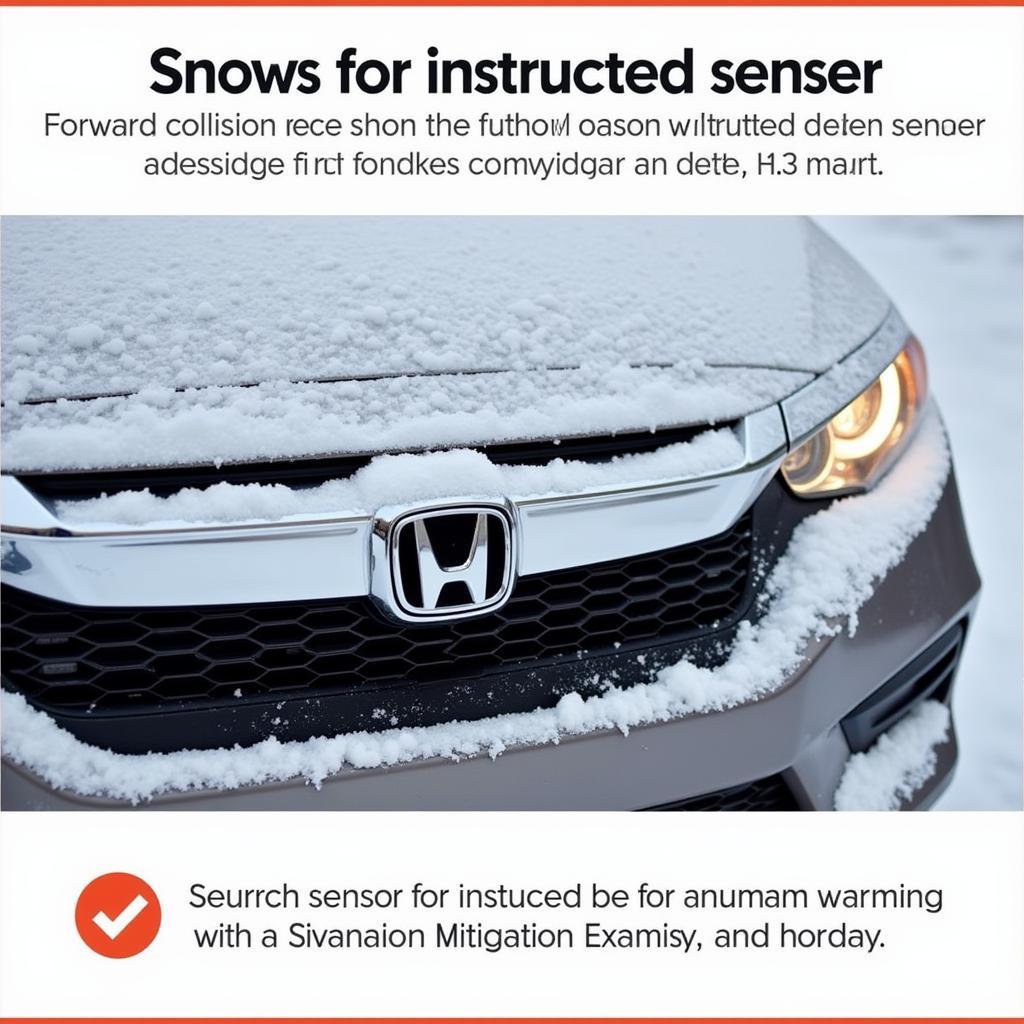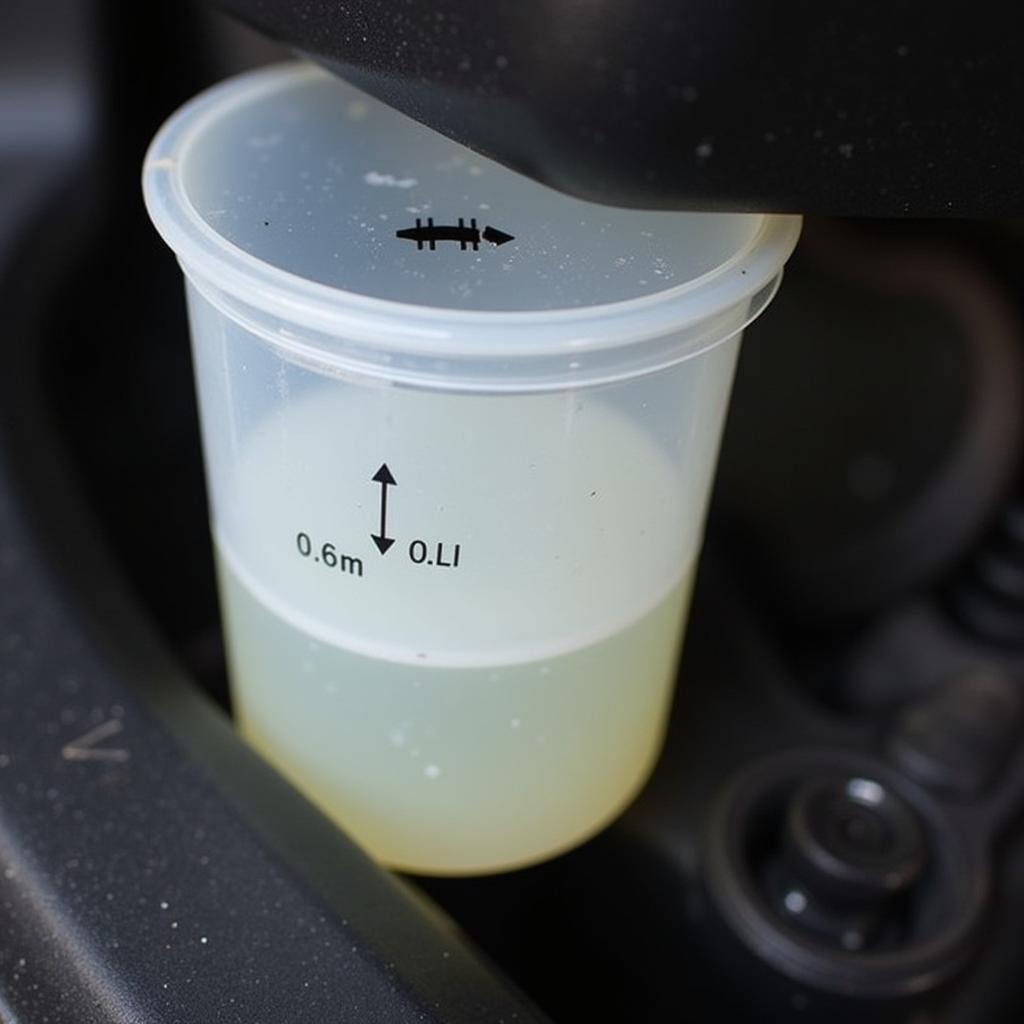The forward collision warning (FCW) and automatic emergency braking (AEB) systems within Honda Sensing are crucial safety features designed to prevent or mitigate collisions. However, like any technology, they can sometimes malfunction or trigger unexpectedly. This comprehensive guide addresses common issues with Honda Sensing’s forward collision warning and auto brake, providing troubleshooting steps and solutions for drivers experiencing these problems.
Understanding Honda Sensing’s Forward Collision Warning and Collision Mitigation Braking System (CMBS)
Honda Sensing utilizes a combination of radar and camera sensors to detect potential hazards ahead. When the system perceives an imminent collision, the forward collision warning alerts the driver with visual and audible warnings. If the driver fails to react, the collision mitigation braking system (CMBS), also known as the auto brake, automatically applies the brakes to reduce the severity of the impact or even avoid it altogether.
Common Issues with Honda Sensing’s Forward Collision Warning and Auto Brake
Several factors can cause malfunctions or false alarms with these systems. These include:
- Obstructed Sensors: Dirt, snow, ice, or even insects can block the sensors, preventing them from functioning correctly.
- Environmental Factors: Heavy rain, fog, or bright sunlight can interfere with the sensor’s ability to detect objects accurately.
- Software Glitches: Occasionally, the software controlling the system may experience a glitch, requiring a reset or update.
- Misaligned Sensors: After an accident or other impact, the sensors may become misaligned, requiring recalibration.
- Faulty Components: In some cases, a faulty sensor, control unit, or wiring harness may be the culprit.
 Honda Sensing Obstructed Sensor
Honda Sensing Obstructed Sensor
Troubleshooting Honda Sensing Forward Collision Warning and Auto Brake Problems
If you’re experiencing issues with your Honda Sensing system, here’s a step-by-step guide to help you troubleshoot the problem:
- Check for Obstructions: Carefully inspect the radar sensor located in the front grille and the camera mounted near the rearview mirror. Remove any dirt, snow, ice, or other obstructions.
- Restart the Vehicle: Sometimes, a simple restart can resolve temporary software glitches. Turn off the engine, wait a few seconds, and then restart.
- Consult the Owner’s Manual: Your owner’s manual provides valuable information about the Honda Sensing system, including troubleshooting tips and indicator light explanations.
- Check for Software Updates: Honda periodically releases software updates for its vehicles. Contact your local Honda dealer to check if any updates are available for your car’s Honda Sensing system.
- Seek Professional Assistance: If the problem persists, it’s crucial to seek professional assistance. A qualified Honda technician can diagnose the issue using specialized diagnostic equipment and perform any necessary repairs or recalibrations.
Why is my Honda Sensing Braking for No Reason?
Sometimes, the system might trigger unnecessarily. This can be due to environmental factors, misaligned sensors, or even driving habits. Approaching curves or hills too quickly might trigger the system.
What if my Forward Collision Warning Light Stays On?
A persistent forward collision warning light indicates a potential problem with the system. It’s essential to have the system inspected by a qualified technician as soon as possible. Ignoring the warning light could compromise your safety.
How Much Does it Cost to Fix Honda Sensing?
The cost of repairing a Honda Sensing system can vary depending on the specific issue. Minor repairs, such as sensor cleaning or recalibration, may be relatively inexpensive. However, replacing a faulty sensor or control unit can be more costly.
“Regular maintenance and prompt attention to warning lights are essential for keeping your Honda Sensing system functioning optimally,” advises John Miller, a senior automotive diagnostics engineer with over 20 years of experience. “Don’t hesitate to consult a qualified technician if you experience any issues.”
Conclusion: Keeping Your Honda Sensing in Top Condition
The forward collision warning and auto brake features of Honda Sensing are vital safety components. Understanding how they work and knowing how to troubleshoot common problems can help ensure they’re always functioning correctly. Regular maintenance and prompt attention to any warning lights or unusual behavior are crucial for your safety and the optimal performance of your Honda Sensing system. Don’t hesitate to seek professional help if you encounter any issues with your forward collision warning or auto brake.
FAQ
- Can I turn off Honda Sensing? Yes, you can temporarily disable certain features of Honda Sensing, but it’s generally recommended to keep them active for optimal safety.
- How do I clean the Honda Sensing sensors? Use a soft cloth and mild soap solution to gently clean the sensors. Avoid using harsh chemicals or abrasive materials.
- Does Honda Sensing work at night? Yes, Honda Sensing is designed to function both during the day and at night.
- How often should I have my Honda Sensing system checked? It’s a good idea to have it inspected during regular maintenance visits.
- What is the difference between FCW and CMBS? FCW provides warnings, while CMBS automatically applies the brakes.
- Can I recalibrate Honda Sensing myself? No, recalibration requires specialized equipment and should be performed by a qualified technician.
- Does weather affect Honda Sensing? Yes, adverse weather conditions can sometimes affect the system’s performance.

